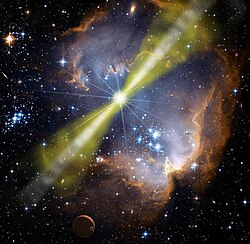
Neocatastrophism is the hypothesis that life-exterminating events such as gamma-ray bursts have acted as a galactic regulation mechanism in the Milky Way upon the emergence of complex life in its habitable zone. [1] [2] [3] It is one of several proposed solutions to the Fermi paradox since it provides a mechanism which would have delayed the advent of intelligent beings in local galaxies near Earth.